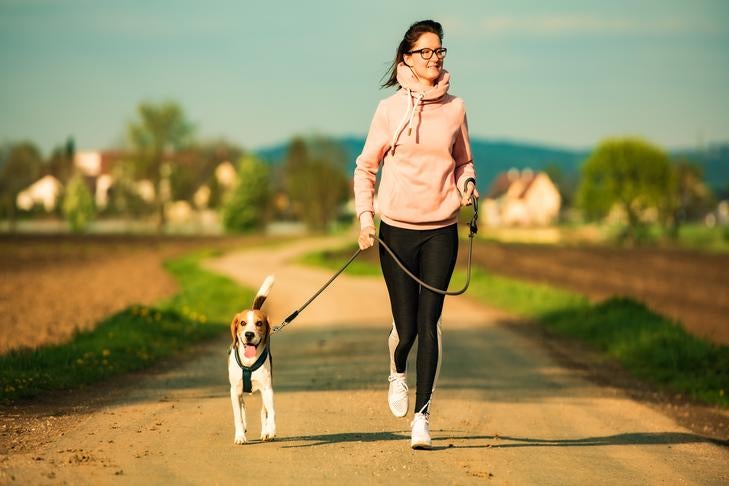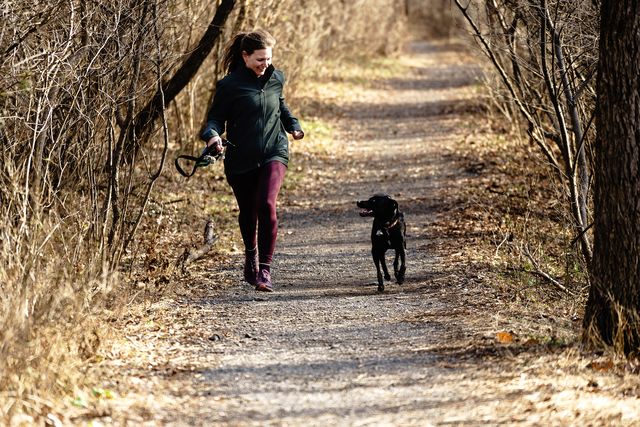How To Train Your Dog to Be a Trail Runner
To train your dog to be a trail runner, start with short runs, gradually increasing distance and pace. Trail running can be an excellent activity to enjoy with your furry companion, providing both physical exercise and mental stimulation for your dog.
By following some simple training techniques, you can help your dog become a confident and well-behaved trail runner. Building up your dog’s endurance and ensuring they are comfortable running on various terrains are essential steps in the training process. With patience, consistency, and positive reinforcement, you can transform your dog into a skilled trail running partner ready to hit the trails with you.
1. Assessing Your Dog’s Fitness Level
Before embarking on a trail running adventure with your furry friend, it’s crucial to evaluate your dog’s fitness level to ensure they are adequately prepared for the physical demands of the activity. The assessment process involves carefully considering various aspects of your dog’s health and consulting with a veterinarian to address any potential concerns.
1.1 Evaluating Your Dog’s Health
In assessing your dog’s fitness for trail running, it’s essential to consider their overall health. Keep an eye out for any signs of underlying health issues or physical limitations that could affect their ability to participate in this activity. Some key factors to take into account include weight, age, previous injuries, and any specific breed-related health concerns.
1.2 Consulting With A Veterinarian
Prior to initiating a trail running regimen, it’s imperative to consult with a qualified veterinarian to obtain professional guidance on your dog’s suitability for this rigorous exercise. A thorough examination by a vet will help identify any potential health risks, establish a tailored fitness plan, and ensure your dog is in optimal physical condition to engage in trail running. Additionally, your veterinarian can provide valuable insights into preventive care, nutrition, and hydration strategies tailored to your dog’s unique needs.

Credit: www.akc.org
2. Introducing Basic Commands And Training
To prepare your dog for trail running, it’s essential to start by introducing basic commands and training.
2.1 Teaching Your Dog To Walk On A Leash
- Begin with a collar and leash introduction inside your home.
- Practice walking on a leash in a quiet, distraction-free environment.
- Use positive reinforcement such as treats to encourage leash walking.
2.2 Practicing Recall And Stay
- Work on recall commands like “come” in a safe, enclosed area.
- Practice the “stay” command to help your dog focus and wait for cues.
- Consistency is key in reinforcing these commands during training sessions.
2.3 Building Endurance Through Regular Exercise
Boost your dog’s endurance by incorporating regular exercise routines.
3. Gradually Increasing Distance And Intensity
Introducing your dog to trail running should be a gradual process to prevent injury or strain.
3.1 Incorporating Trail Walks And Hikes
Start by taking your dog on short trail walks to familiarize them with the environment and build endurance.
You can gradually increase walk distances and terrain difficulty as your dog becomes more comfortable.
3.2 Conditioning Your Dog For Trail Running
Prioritize consistent training sessions to improve your dog’s endurance and strength for trail running.
Incorporate cross-training activities, such as swimming or hiking, to enhance overall fitness levels.
3.3 Monitoring Your Dog’s Progress
Keep a close eye on your dog’s response to training sessions and monitor for signs of fatigue or discomfort.
Adjust the distance and intensity of runs based on your dog’s performance and well-being.

Credit: rvce.edu.in
4. Safety Precautions And Gear For Trail Running
When it comes to trail running with your dog, it’s important to prioritize safety precautions and the right gear. Proper equipment can make a significant difference in keeping both you and your furry companion safe as you hit the trails. In this section, we’ll cover the essential safety measures and gear you need to ensure a smooth and secure trail running experience with your canine partner.
4.1 Choosing The Right Harness And Leash
Before hitting the trails, choose a harness that fits your dog comfortably, allowing for unrestricted movement. A no-pull harness can help in managing your dog’s movements while minimizing strain on the neck. Opt for a hands-free leash that attaches securely to your waist, providing you with better balance and control during the run.
4.2 Carrying Essential Supplies
When trail running with your dog, it’s crucial to carry a few essential supplies to ensure both of your safety. Pack a collapsible water bowl and enough water, snacks, and waste bags. It’s also a good idea to bring a basic first-aid kit for any minor injuries that may occur during the run. Additionally, consider carrying a bear bell or bear spray if you are in areas where encounters with wildlife may be possible.
4.3 Protecting Paws And Checking For Injuries
Prior to your trail run, protect your dog’s paws by applying a paw wax or using booties to shield them from rough terrain and hot surfaces. During breaks, check your dog’s paws for any cuts, thorns, or other potential injuries. Regularly monitor your dog’s overall condition and address any signs of discomfort or fatigue promptly.
5. Nutrition, Hydration, And Post-run Recovery
Discover how to turn your furry friend into a trail running companion with these tips on nutrition, hydration and post-run recovery. Give your dog the fuel and care they need to stay healthy and enjoy the great outdoors together.
Ensuring that your trail running companion is well-nourished, hydrated, and given adequate rest and recovery is essential for their overall performance and well-being. Here are some tips to help you provide the right nutrition, maintain hydration levels, and implement proper rest and recovery routines for your dog.5.1 Providing A Balanced Diet
A balanced diet is crucial to meet your dog’s energy requirements and support their endurance as a trail runner. Ensure their meals consist of high-quality protein to aid in muscle repair and growth. Incorporate healthy fats for sustained energy and joint support. Include complex carbohydrates for fuel during long runs. Remember to introduce new foods gradually to avoid any digestive upsets.5.2 Hydrating Your Dog During And After Runs
Keeping your dog well-hydrated throughout their trail runs is vital to prevent dehydration and overheating. Carry a collapsible water bowl and micro-filtered water on your runs. Offer small amounts of water at regular intervals, especially during breaks. Observe your dog for signs of excessive panting or fatigue, which may indicate dehydration. After the run, encourage your dog to drink more water to replenish lost fluids.5.3 Implementing Proper Rest And Recovery
Proper rest and recovery are essential to prevent injury and allow your dog’s body to recover from the physical exertion of trail running. After each run, provide a comfortable resting area for your dog to relax and recharge. Implement shorter, recovery runs in between intense runs to give their muscles time to recover. Consider utilizing foam rollers or massage techniques to ease muscle soreness and promote blood circulation.In conclusion, ensuring your dog’s nutrition, hydration, and post-run recovery are properly attended to will contribute to their success and enjoyment as a trail runner. A balanced diet, proper hydration, and adequate rest and recovery will help keep your furry companion healthy and energized for your adventures on the trails.

Credit: outwardhound.com
Frequently Asked Questions For How To Train Your Dog To Be A Trail Runner
How Can I Train My Dog To Be A Trail Runner?
Training your dog to be a trail runner involves gradually increasing their endurance, practicing commands on different terrains, and rewarding positive behavior consistently.
What Are The Benefits Of Trail Running With My Dog?
Trail running with your dog provides mental and physical stimulation, strengthens the bond between you and your pet, and helps them maintain a healthy weight.
Are There Any Safety Precautions I Should Take While Trail Running With My Dog?
Ensure your dog is properly hydrated, protect their paws with dog booties or paw balm, be mindful of weather conditions, and keep them on a leash for their safety and the safety of others.
Conclusion
Training your dog to be a trail runner can be a rewarding and fulfilling experience for both you and your furry companion. With patience, consistency, and positive reinforcement, you can build a strong bond with your dog while enhancing their physical and mental well-being.
By following the tips and techniques outlined in this blog post, both you and your dog can enjoy the many benefits of trail running together.






